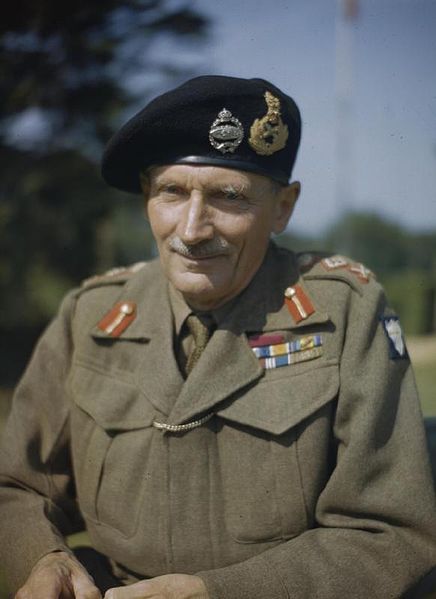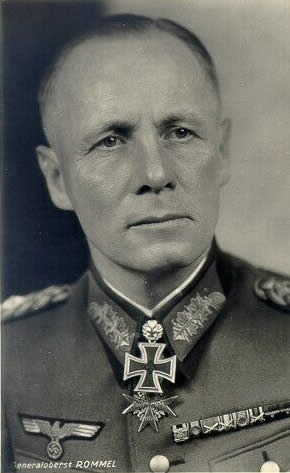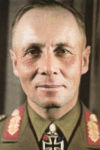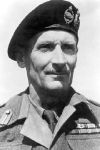How Montgomery Captured the Mareth Line
The War Illustrated, Volume 6, No. 153, Page 718, April 30, 1943.
"In the battle that is now to start", said General Montgomery in his message to his troops on the eve of the battle against the Mareth Line, "the Eighth Army will destroy the enemy now facing us in the Mareth positions; will burst through the Gabès gap; will then drive northwards on to Sfax, Sousse, and finally to Tunis. We will not stop or let up until Tunis has been captured and the enemy has either give up the struggle or has been pushed into the sea."
In a dramatic interpolation towards the end of his soon-to-be-famous broadcast on March 21, 1943, Mr. Churchill said that he had just heard from General Montgomery that "the Eighth Army are on the move and that he is satisfied with their progress."
Like Montgomery's first great attack at El Alamein, this new offensive was a frontal assault on the most vital sector of Rommel's front. As at El Alamein, too, it was preceded and accompanied by tremendous artillery and air bombardments. Launched on the evening of Saturday, March 20, against the Mareth Line between the sea and the road from Medenine to Gabès, in its initial stages it was reported to be highly successful. On Sunday evening it was stated at Allied Headquarters that the Eighth Army had captured all its preliminary objectives in the face of the most bitter resistance from the Africa Korps. "Fierce fighting ensued", stated the official communiqué; "operations are still continuing satisfactorily".
On the next day the news continued to be good. The Eighth Army was reported to have smashed a gap in Rommel's first main defence line between the villages of Mareth and Zarat, and through the gap into the bridgehead that had been won General Montgomery was pouring tanks, guns and infantry, British, Dominion, and Indian, under cover of a terrific bombardment. Yet on Wednesday morning, March 24, the Prime Minister found it incumbent upon him to utter a word of warning in the House of Commons. "Much very hard fighting still lies before the British and United States' forces", he said. "The latest information from the Mareth Front shows the Germans by counter-attacks have regained the greater part of the bridgehead which had been stormed, and that their main line of defence in that quarter has been largely restored."
Although the communiqué issued later in the day from Allied Headquarters referred only to fierce fighting in the Mareth area and enemy counter-attacks successfully repulsed, Algiers radio and dispatches from the Press correspondents confirmed that Rommel had succeeded in recapturing most of the terrain gained by the 8th Army in its initial leap forward. How had the bridgehead been lost? Let us go back to the opening of the story.
Attacking by moonlight, British infantry of the 50th Northumbrian Division fought their way across the Wadi Zigzau, a formidable, deep ravine, wide and wet and very difficult for tracked or wheeled vehicles to cross. The Northumberland sappers, however, struggled across under terrific fire and put down a causeway of brushwood and boulders, over which a few tanks and more infantry were got into the bridgehead. Then with nightfall the attack was renewed, and several of the pill-boxes – small fortresses, 20 feet or so in diameter and with walls 5 ft. thick – beyond the ravine were entered, although enemy resistance was not entirely overcome.
Torrents of rain falling during the previous nights turned the wadi into a morass, and the causeway, being under point-blank fire from the enemy's artillery, was continually being broken up. Efforts were made to construct a stronger causeway, so as to enable more tanks and anti-tank guns to be rushed into the bridgehead in readiness for the expected German counter-attack. But before it could be built the 15th Panzers launched an assault on the afternoon of the second day (Monday, March 22). Fighting was magnificent courage and devotion, the men from Northumberland were gradually forced back across the ravine by sheer weight of numbers (see page 700). On the southern side were massed a great weight of tanks, guns and men, but these could do nothing to help. That narrow defile, so slippery, so swept by enemy fire, lay in between. So the British withdrew – from the further pill-boxes, then from the other side altogether except for Ksiba Ouest; then that, too, had to be abandoned, such was the absolutely overmastering strength of the enemy. But (as will be seen) the men who died in that bloody ravine had not died in vain.
Meanwhile the attackers elsewhere were having better fortune. The Americans at Gafsa pushed on steadily along the road to Maknassy, while a second American force, supported by a French force, made through El Guettar for Gabès. More important still, south of the salt marches another Allied column, under Lt.-Gen. Freyberg, was developing a threat against Rommel's right flank at El Hamma.
As things turned out it was this column which tipped the scale against Rommel. Shortly before Montgomery opened his main attack he had dispatched Freyberg across the rocky desert in a great turning move. Travelling from Foum Tatahouine by night and lying hid during the day, Freyberg reckoned on March 19 that he had been spotted by Nazi reconnaissance planes, so all the next day he marched and attacked that night, driving a wedge into the German defences north of the Matmata hills. When the bridgehead at Wadi Zigzau had to be abandoned on March 23, General Montgomery decided to switch the main attack from the Mareth Line to the flank where Freyberg was making such good progress. So reinforcements and supplies were rushed to the New Zealand general; for mile after mile the lorries were nose to tail without a break. On Friday, March 26, the newly-arrived forces were put into the line under cover of darkness and the khamsin (hot desert wind) which by good fortune was blowing for once in the enemy's face.
At two in the afternoon the great attack was opened by the R.A.F.'s Kittihawks; a bombing attack was made every thirty seconds for two and a half hours by these heavily-armed fighters, during which over 300 sorties in low-flying bombing and strafing attacks were carried out. At 4 p.m. the artillery opened up and blasted every foot of the enemy's positions. Then the rocky plain became alive with tanks and infantry which had been hidden there. Shermans and Grants were in the van, followed by Crusaders and Valentines. They charged down the road that leads to El Hamma across a saddleback some ten miles wide, crowned by ruins of a two-foot-high wall constructed by the Romans centuries ago. Wrote The Times' Special Correspondent:
"Roaring and lurching over the uneven ground, the mechanized mass moved with awesome slowness in six columns towards the Roman wall across the saddleback. As it neared the gap from the east newly-arrived troops, with tanks and infantry, advanced and wheeled right to face the enemy just out of range.
"As one watched and listened one tried to put oneself in the soul of a German or Italian watching from the other side and imagine the cold horror with which he saw, as shells fell thick round him, and bombs crashed in destruction behind, while the wind blinded and stifled him with its acrid dust, the mighty array of Allied power rolling inexorably against him."
Sweeping across the Roman wall, Freyberg's infantry carried the enemy's positions at the point of the bayonet. Then they stormed the gun positions two miles back. Passing through the infantry, the armour drove steadily on to the outskirts of El Hamma. All night and well into the next day the battle continued. The Italians surrendered in large droves, but the Germans continued to fight with desperate ferocity like rats in a trap – as indeed they were. For their line of retreat lay towards the Mareth Line, and the Mareth Line was now dissolving. Unable to withstand the tremendous weight of the El Hamma blow – his famous Panzers were far too heavily involved at Wadi Zigzau to be switched to the west – Rommel decided to withdraw while the way to the coast remained open. Montgomery was hard on his heels: on that same Sunday (March 28) the Eighth Army occupied Mareth, Toujane and Matmata, taking several thousands of prisoners. At the same time the Americans and French east of El Guettar developed their threat against Rommel's line of retreat.
Speaking in the House of Commons on March 30, Mr Churchill announced that "General Montgomery's decision to throw his weight on to the turning movement, instead of persisting with the frontal attack, has been crowned with success. Another severe defeat has been inflicted by the Desert Army upon the Axis forces they have so long pursued." Then after giving the news that El Hamma has been occupied the previous night and that "our vanguards passed through Gabès this morning", the Prime Minister added that "the decisive break-through of General Freyberg's turning troops had been aided to an extraordinary degree by novel forms of intense air attack in which many hundreds of British aircraft had been simultaneously employed." Without any underrating of the tasks which still lies before the Allies in Tunisia, the Premier concluded with the remark that "we have every reason to be satisfied with the progress already made by our superior forces and superior equipment under their skilful and resolute commanders."
Index
Previous article
I Was There! - We Formed Human Pyramids to Cross Wadi Zigzau
A young British major with a bullet embedded an inch above his heart continued to lead his men at the storming of Wadi Zigzau, in the first stage of the Mareth Line attack. Paul Bewsher, Daily Mail Sp
Next article
Helicopters Should Be Useful Against U-Boats
Britain has placed orders in America for helicopters, announced Capt. H. Balfour, Under-Secretary of State for Air, in the House of Commons on March 11. These aircraft, he went on to state, would be e







